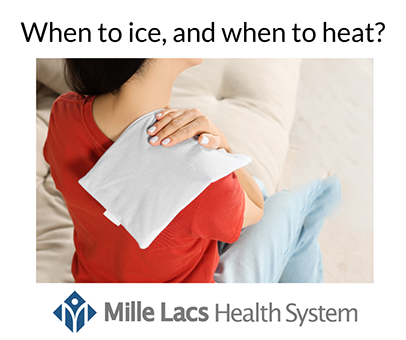Do I ice or heat my injury?
August 4, 2023
The choice between ice and heat depends on the nature of your discomfort. Ice therapy is typically recommended for acute (sudden) injuries or pain accompanied by inflammation and swelling. The cold reduces blood flow to the affected area, helping to ease inflammation and swelling, particularly around the joints or tendons. If the pain presents with redness, swelling, and warmth, then ice is probably best.
An ice pack, bag of ice, or even a bag of frozen vegetables such as peas can work great. It’s ideal to have something that can conform to the shape needed such as wrap around an ankle, etc. It’s crucial to wrap the ice pack in a thin towel to protect the skin, and limit its application to 15-20 minutes every two to three hours. It is better to ice an injury several times a day than all at once.
Minor injuries or overuse can usually be treated at home using the R.I.C.E. method, an acronym, for rest, ice, compression, and elevation.
Ice treatments are most often used for sudden injury, overuse, arthritis, and headache.
Heat therapy is beneficial for chronic (long-term) conditions as it helps to relax and loosen tissues, and stimulate blood flow. For those dealing with chronic discomfort or stiffness such as back pain, a warm compress or heating pad can offer relief. Heat therapy has even been recommended before exercising or doing physical activity to loosen things up, and can then follow up with ice afterward if needed. Think, “warm up, and cool down.”
Heat therapy can be applied for about 15-20 minutes at a time. Like ice, heat should not be applied directly to the skin so a thin cloth between is recommended.
Heat treatments are often used for stiffness, cramps/spasms, and long-term discomfort.
Here are a few signs it might be time to seek medical help: when the pain is extreme, when swelling or bruising accompany the pain, if your range of motion is significantly limited, if the pain lasts more than three days, and if the pain keeps coming back.
